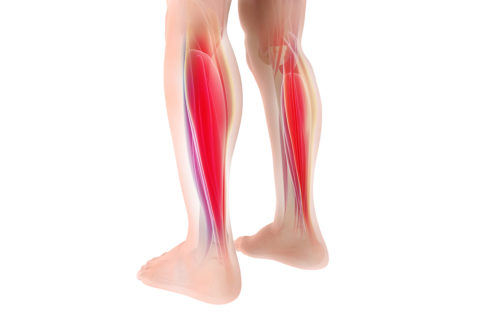How our muscles work
Team of FAU researchers unlocks the secret behind microtubule organisation in muscles
Muscles play an essential role in several bodily functions. For example, the cardiac muscle supplies the body with oxygen and nutrients, skeletal muscles enable us to actively move our bodies. Weakened muscles can lead to various medical conditions, and conditions that affect the muscles of the heart are not only especially dangerous but also among the most frequent causes of death. Muscle weakness is also a serious problem in chronic medical conditions such as cancer. If we are to develop new treatments, it is therefore essential that we understand how muscles are formed and how they work. Medical experts at FAU have now identified a mechanism that explains muscle function better.
Muscle cells have a type of supporting structure known as the cytoskeleton. Microtubules, which are tube-shaped protein complexes in the cells, are an important part of the cytoskeleton. Any changes to their structure or function can lead to muscle weakness, and in the case of the cardiac muscle, it can lead to heart failure. Scientists have long suspected that changes in the microtubules after birth are one reason that cardiac muscle cells in humans do not multiply and thus cannot contribute to the regeneration of damaged cardiac muscle tissue, for example after a heart attack. Research has shown, however, that the microtubules can be modified to improve the contractility of muscles, making muscles stronger again. Microtubules therefore provide an interesting starting point for new treatments. However, more research is required to understand exactly how the microtubule network works.
Dr. Silvia Vergarajauregui and Dr. Robert Becker from the Experimental Kidney and Vascular Research working group led by Prof. Dr. Felix Engel at FAU have identified a molecular mechanism that controls the formation of structures known as muscle-specific microtubule organising centres. Robert Becker has demonstrated that myogenin, a skeletal muscle development regulator, promotes the formation of these microtubule organising centres (MTOC) where microtubules are produced. The protein AKAP6 is required as part of this mechanism. If AKAP6 is missing in the skeletal muscle cells, the process behind the correct positioning of the cell nuclei is disrupted. A similar problem can occur in some types of degenerative muscle disorders (muscular dystrophies).
In a parallel study, Silvia Vergarajauregui demonstrated that AKAP6 is also responsible for the formation of MTOC and thus for organising microtubules in cardiac muscle cells. She discovered that AKAP6 acts as a type of scaffold for other MTOC components and simultaneously interacts with components of the nuclear envelope, thereby enabling MTOC to be formed in the correct place. Interestingly, in conjunction with Dr. Ulrike Steffen at the Chair of Medicine 3 led by Prof. Dr. Georg Schett, Dr. Vergarajauregui also discovered that osteoclasts (cells that break down bone) require AKAP6 to form their MTOC and therefore perform their function of breaking down bone.
The researchers hope that their findings will improve our understanding of muscle conditions and bone degradation as well as improve our understanding of the causes of cardiac insufficiency.
Original publications:
https://pubmed.ncbi.nlm.nih.gov/34605406/
https://pubmed.ncbi.nlm.nih.gov/33295871/
Further information:
Prof. Dr. Felix Engel
Phone: +49 9131 85-25699
felix.engel@uk-erlangen.de
